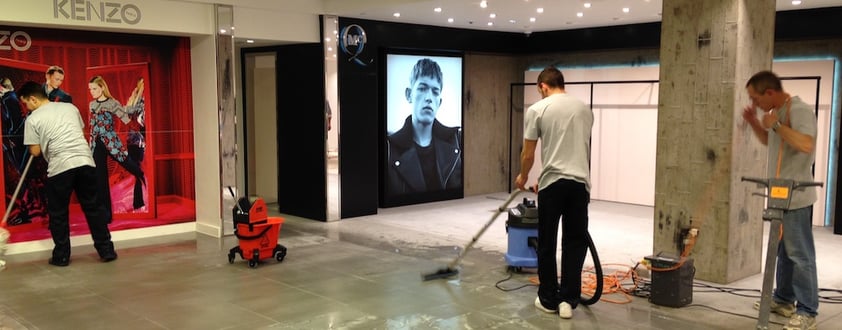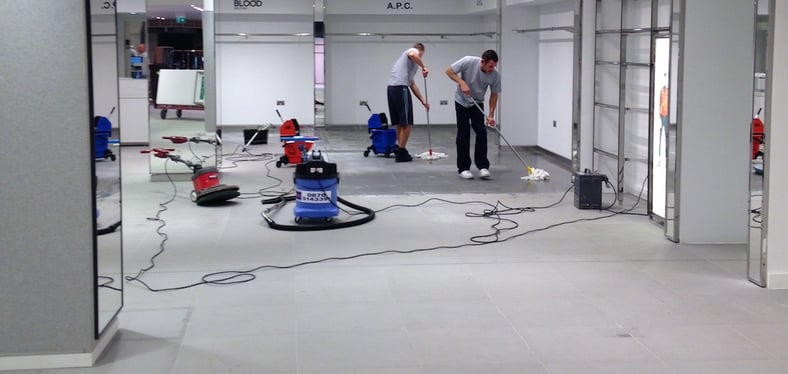Cleaning and Restoring Natural Stone Floors
Other articles on our blog site talk about the importance of properly sealing stone floors for ease of maintenance. For a variety of reasons, sometimes it just doesn't happen and a floor can end up looking dull or stained. So what can be done to restore the floor?

However badly marked they get, the good news is that they can generally be restored to their former glory.
Whether it's on a small, private houseboat or in London's most famous retail store, we have demonsrated that the process for cleaning and restoring a natural stone floor is a matter of science and experience.
Step 1)
Identify the type of stone and the type of stains. This helps to determine what processes can be used to clean the floor. For example, a honed or polished limestone or marble floor can be etched by acids and make the problem worse. So be careful what treatment you use.
Step 2)
Carry out a localised test. This may require a variety of different cleaners or strippers to remove all the different types of stain. Sometimes, cleaning with chemicals alone is not enough to remove all the marks and it may be necessary to grind a millimetre or two off the surface. It's a little bit like sanding back a wooden floor. Fortunately, this can be done on a stone floor but it would be far more difficult on most man-made floor coverings.
Step 3)
Carry out the clean/strip/grind on the whole area. Now that you have identified the type of stone and worked out what the optimum process should be in a small test area, it is time to work on the rest of the floor. Work methodically on small sections of the floor. Some areas are likely to be heavier soiled than others and it may be necessary to repeat the treatment on some sections before moving on.
Step 4)
Rinse off the whole area thoroughly and allow the floor to dry fully. Sealers are usually far more effective when applied to completely dry floors. The best sealers will impregnate the stone rather than simply cover the surface and if there is moisture in the stone, it may inhibit the sealer from penetrating fully.
Step 5)
FInally, once the sealer has dried and any residue has been removed from the surface, apply a wax (if required) and buff the floor with a white pad on a single disc slow speed floor polisher.

If you would like some advice specific to your own restoration project, please give me a call or get in touch by email (my contact details are below).
Our brochure explains how we work and how we can help your natural stone project be successful.
Thanks for reading.
Steve Turner
Amarestone
Tel: 0345 260 8070
Email: steve@amarestone.com
P.S. - get the next blog direct to your inbox by entering your email address in the box on this page.


